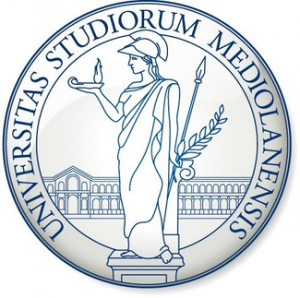This article explores how nonprofit Asia Catalyst implemented a rights-training program for community-based organizations (CBOs) in Myanmar and the positive outcomes of these collaborations. The three CBO partners discussed represent heavily marginalized groups in Myanmar: people who use drugs, people living with HIV, and sex workers. Through this program, Asia Catalyst taught rights-driven approaches to gathering data in interviews, which has helped the groups sharpen and enhance their advocacy skills, which in turn has enabled them to effectuate positive change
 By Julia K. Klein, J.D.
By Julia K. Klein, J.D.
Duke University School of Law, J.D.
Vanderbilt University, B.A., cum laude
julia.k.klein@duke.edu
Duke Law International Human Rights Clinic
Expanding Access to Rights Documentation: Tools for Marginalized Groups in Myanmar
Asia Catalyst is a nonprofit organization empowering community-based organizations (CBOs) with tools and resources to help them become more effective in human rights documentation and advocacy, which strengthens organizations’ ability to function democratically, sustainably, and more effectively cater to the needs of their communities. We have worked domestically, nationally, and internationally to empower hundreds of civil society groups across Asia, primarily in China and Southeast Asia, since 2006. We began working concertedly in Myanmar in 2015 with our Regional Rights Training (RRT) program, which also included Viet Nam, Cambodia, and China. The RRT program focused on strengthening CBOs through workshops on topics such as a rights-driven approach to data collection and documentation, regional coalition-building of like-minded organizations, publications of comprehensive reports highlighting findings and policy recommendations, and customized advocacy support to assist in implementation of rights-based advocacy projects for each of the participating groups. In 2017, Asia Catalyst established a country program in Myanmar to focus on continued rights training demand from local CBOs following our successful RRT engagement. Through this new Human Rights Documentation and Advocacy Project in Myanmar, CBOs are guided through the rights framework and identify priority issues to document and create an evidence base for policy advocacy and coalition building.
Myanmar has undergone widespread changes in government and expansion of civil liberties since November 2010, when the long-ruling military junta was replaced by a military-backed civilian government.[1] Accompanying changes such as the revival of democracy, the installation of a human rights commission, and the advent of legalized demonstrations in Myanmar are the collective efforts of government, nongovernmental organizations (NGOs), intergovernmental organizations (IGOs), and international nongovernmental organizations (INGOs) to improve access to healthcare for marginalized groups, such as people who use drugs and people living with HIV. Focus in Myanmar on these areas is crucial. Myanmar has the second highest HIV prevalence in Southeast Asia after Thailand,[2] with an estimated prevalence of 0.7% of adults living with HIV.[3] Myanmar is one of 35 countries accounting for 90% of new cases of HIV. Illicit drug use is pervasive, with an estimated 83,000 people using opium or heroin in Myanmar. HIV prevalence among people who inject drugs is 34.9%. Among sex workers, another stigmatized group, 5.4% have acquired HIV.[4] Given these alarming statistics, and in line with global health and development goals, in 2017, Myanmar pledged to end HIV as a public health threat by 2030 through a robust educational program and universal access to prevention, treatment, and care.[5] The Myanmar government also plans to achieve ambitious 90-90-90 targets.[6] The 90-90-90 target means 90% of people living with HIV know their status, 90% of people who know they are living with HIV have access to treatment, and 90% of people in treatment have successfully suppressed viral loads.[7] Myanmar aims to complete the 90-90-90 plan by 2020.[8]
Accurate data on people living with or at high risk of HIV is essential for governments in order to address epidemics, yet criminalized groups are frequently denied, ignored, or invisible in national statistics and data collection efforts. Understanding HIV among key populations,[9] such as people who use drugs and sex workers, is essential for the appropriate design of and access to effective prevention and treatment programs.
To promote vital data collection by and for communities and to promote effective government advocacy from findings, we implemented workshops designed to expand the ability of CBOs to document rights abuses, contribute to the local evidence base, and advocate for their rights more effectively. This article highlights two recent examples from our program. The first describes documentation and advocacy by women living with HIV and sex workers, on access to healthcare including sexual and reproductive services. The second describes community-led data collection by people who use drugs on the impact of recent closures of harm reduction[10] drop-in centers (DICs) in Yangon, Myanmar’s largest city.
Rights-Based Data Collection on Accessing Reproductive Healthcare for Women Living with HIV and Sex Workers and Subsequent Advocacy
A core component of our rights training program includes building documentation skills to generate local evidence for advocacy. We worked with Myanmar Positive Women’s Network (MPWN) and Right to Health Action Myanmar (RHAM) to design and implement research on their communities’ priority concerns. For RHAM, this was access to sexual and reproductive health services for sex workers. For MPWN, this was collecting rights-focused data about sex workers’ experiences accessing health services at government healthcare facilities in Yangon. MPWN is a country-wide organization dedicated to empowering women living with HIV through training them to advocate for themselves to meet health, economic, and social needs. RHAM is a Yangon-based CBO focused on improving access to sexual and reproductive health services for sex workers as well as fighting for improvement of policies that lead to discrimination and violence against sex workers. It is imperative to address the issues facing these groups because 5.4% of sex workers[11] and 0.7% of women aged 15 and over are currently living with HIV.[12]
Overall, women living with HIV reported negative experiences in accessing treatment because of harassment from medical professionals and staff, public exposure of their HIV status, and addition of unnecessary treatment costs. In general, the interviewees reported feeling comfortable accessing healthcare at National Aids Program treatment centers. Interviewees reported easy access to condoms, but some sex workers stated access was harder due to discrimination from doctors and fear that their occupation would be disclosed to their families and neighbors. However, interviewees reported having very little information about preventing HIV transmission during pregnancy and childbirth. Some women reported being shamed by healthcare workers for getting pregnant, and they were not provided meaningful education on how to have a healthy pregnancy with HIV. One interviewee reported forced sterilization. Some reported further stigmatization because they were also sex workers. Stigmatization sometimes took the form of having to pay additional fees, such as cleaning costs and additional bedsheets, when non-sex workers did not have to. Many respondents reported emotional distress when medical providers or staff disclosed their HIV status publicly. One interviewee stated that she “was traumatized mentally. Because of them, my family knows that I am HIV-positive and I faced a lot of family problems. The lab technician told my result to my mother-in-law. My mother-in-law shouted at me in front of others, ‘you are a prostitute. That’s why you got HIV. You deserve this.’”
The data gleaned from these interviews helped the CBOs construct recommendations to township-level National AIDS Program team leaders about the needs and requests of sex workers in Myanmar. It also enabled the development of recommendations, such as nondiscrimination training of medical staff and doctors, by women living with HIV to the National Aids Program, INGOs, IGOs, NGOs, and the Ministry of Health and Sports.
Community-Oriented Data Collection on the Impact of Drop-in Centers for and Their Closures for People Who Use Drugs
We worked with five CBOs of people who use drugs in Myanmar to understand their human rights and document barriers to evidence-based harm reduction services. It is crucial to work with this population because the Myanmar government chooses to address the epidemic, an estimated 83,000 people who inject drugs, through prison sentences and other punitive approaches by which numerous rights are violated.[13]
The example below provides results from documentation by Youth Empowerment Team (YET), a Yangon-based organization run by young people who have drug use experience. YET focuses on harm reduction programs and is dispelling the notion that harm reduction is equivalent to encouraging drug use. Below, we report on community research methodology and findings as reported by YET.
YET trained four peer educators who interviewed 27 people who use drugs about access to harm reduction drop-in centers, where participants receive services such as methadone therapy, condoms, harm reduction techniques, clean injecting equipment, and referrals to methadone treatment centers and places where they could receive naloxone, which is administered to reverse opioid overdose. Interviewees reported feeling comfortable and welcomed at DICs, perhaps because they are partially run by peer drug users and did not experience as much shaming. They emphasized how crucial methadone is to their recovery and well-being. One interviewee stated “because of methadone therapy I can concentrate more on my work.”
By October 2017, many of these DICs were forced to close due to a lack of funding. This was devasting for people who use drugs in the Yangon area. They reported difficulties in accessing methadone therapy and overdose treatments. DICs were also important social settings for drug users. One interviewee described how the DICs provided him with psychological benefits he can no longer access, stating “it was difficult to get counseling, which I really needed.” They felt comfortable meeting friends and counselors with similar struggles. One interviewee shared that he “lost a place to rest.” Based on these findings, closure of DICs has been devastating for people who use drugs in Myanmar. One interviewee stated “I don’t get needles anymore, so I share with others. I don’t know where to [get] blood testing. I am worried that I could be infected by blood-borne diseases. I can’t control my desire to use drugs.”
However, inspired by needs articulated in interviews, YET has developed a plan to create its own harm reduction program with wide-ranging services such as clean needle distribution, risk-reduction education, and testing for sexually transmitted infections (STIs) including HIV. YET encourages donors and the government to make efforts to reopen centers like DICs for the crucial medical, psychological, educational and social benefits they provided to vulnerable people who use drugs in need. Notably however, CBOs such as YET engaging in outreach programs face the possibility of arrest and harassment by police. For the most meaningful change to occur in reduction of drug-use-related harms including HIV and overdose, draconian laws against drug use must be reformed and people who use drugs should be decriminalized.
Looking Ahead
Myanmar has made significant strides in the post-military junta era in addressing healthcare, such as establishing Universal Health Care, which includes a Basic Essential Access to Health Services Package.[14] It has also committed to addressing the HIV crisis through programs such as comprehensive sex education for Myanmar’s youth population[15] and a five-year strategic plan aimed to end HIV as a public health threat by 2030.[16] However, data from interviewees confirm that key populations still face significant barriers to universal access to HIV services and other rights. On April 29th, 2019, President Win Myint’s spokesperson, U Zaw Htay, stated that Myanmar’s drug policy would be to rehabilitate and reintegrate people who use drugs into society. Reflecting a rehabilitative approach, Htay noted that people who use drugs need assistance instead of punishment.[17] Gains are being made regarding HIV law and policy as well. A bill designed to help people living with HIV, prevent new cases of HIV, eliminate discrimination on the basis of HIV status, and increase access to healthcare for people living with HIV, which has been in the drafting process since 2014, is about to be finalized.[18] The political transition, the passage of progressive and transformative bills, and the introduction of new bills can help create more robust civil society, improved public health, and expand access to rights for all in Myanmar.
The grassroots groups we supported through our Human Rights Documentation and Advocacy Project continue to reap benefits from the training provided. Based on recent feedback from interviewees, RHAM is distributing condoms to sex workers in Yangon. It is also engaging in an outreach program to interview more sex workers about their experiences accessing healthcare for the prevention and treatment of HIV and STIs. MPWN has worked closely with local service providers from the Myanmar Ministry of Health and Sports. MPWN representatives presented their interview findings, developed a regional strategy plan for improved access to healthcare, and discussed how the Ministry and CBOs can coordinate further in the future to meet the needs of women living with HIV. MPWN also advocated to medical service providers to end mistreatment of people living with HIV by medical personnel and establish mechanisms to ensure appropriate interactions. YET has been providing clean needles to people who use drugs and advocating to local team leaders in the Ministry of Health and Sports for the need to reopen spaces where people who use drugs are treated with dignity and can avail themselves of evidence-based harm reduction interventions without discrimination. In addition to advocacy at the local level, YET also presented its interview findings at a National Harm Reduction forum in December 2018.
Despite these critical lifesaving advancements, without investment in groups like MPWN, RHAM, and YET, Myanmar’s traction and gains for its civil society will wither, goals will not be met, and its people will unnecessarily and unjustly suffer. Given the success of our rights training programs, more groups than ever are requesting to take part. We plan to expand our capacity to respond to increasing demands for our training programs through staffing up and investing more in local leadership and coalition-building to improve sustainable civil society advocacy. For more information on how to help these groups continue to perform their crucial work, please visit www.asiacatalyst.org or contact info@asiacatalyst.org.
References and Quotations
[1] “Timeline: Reforms in Myanmar.” BBC News. July 08, 2015. Accessed June 19, 2019. https://www.bbc.com/news/world-asia-16546688
[2] “HIV and AIDS in Myanmar.” AVERT. January 18, 2019. Accessed June 19, 2019. https://www.avert.org/professionals/hiv-around-world/asia-pacific/myanmar.
[3] Ibid.
[4] “Myanmar.” UNAIDS. June 14, 2019. Accessed June 19, 2019. https://www.unaids.org/en/regionscountries/countries/myanmar.
[5] Unaids.org. “Myanmar Launches New HIV Strategic Plan.” UNAIDS. May 19, 2017. Accessed June 19, 2019. https://www.unaids.org/en/resources/presscentre/featurestories/2017/may/20170519_myanmar.
[6] Ibid.
[7] Ibid.
[8] Ibid.
[9] UNAIDS defines key populations as “gay men and other men who have sex with men, sex workers and their clients, transgender people, people who inject drugs and prisoners and other incarcerated people as the main key population groups. These populations often suffer from punitive laws or stigmatizing policies, and they are among the most likely to be exposed to HIV. Their engagement is critical to a successful HIV response everywhere—they are key to the epidemic and key to the response. Countries should define the specific populations that are key to their epidemic and response based on the epidemiological and social context. The term key populations at higher risk also may be used more broadly, referring to additional populations that are most at risk of acquiring or transmitting HIV, regardless of the legal and policy environment.” UNAIDS Terminology Guidelines.” UNAIDS. 2015. Accessed June 19, 2019. https://www.unaids.org/sites/default/files/media_asset/2015_terminology_guidelines_en.pdf.
[10] UNAIDS describes harm reduction as “a comprehensive package of policies, programmes and approaches that seeks to reduce the harmful health, social and economic consequences associated with the use of psychoactive substances. The elements in the package are as follows: needle and syringe programmes; opioid substitution therapy; HIV testing and counselling; HIV care and antiretroviral therapy for people who inject drugs; prevention of sexual transmission; outreach (information, education and communication for people who inject drugs and their sexual partners); viral hepatitis diagnosis, treatment and vaccination (where applicable); and tuberculosis prevention, diagnosis and treatment. For example, people who inject drugs are vulnerable to bloodborne infections (such as HIV) if they use non-sterile injecting equipment. Therefore, ensuring adequate supplies of sterile needles and syringes is a harm reduction measure that helps to reduce the risk of blood-borne infections.” Ibid.
[11] “Myanmar.” UNAIDS. June 14, 2019. Accessed June 19, 2019. https://www.unaids.org/en/regionscountries/countries/myanmar.
[12] Ibid.
[13] More information about drug laws in Myanmar can be found at: Frontier. “Myanmar’s Zero-tolerance Drug Policy Is Doomed to Fail.” Frontier Myanmar. January 28, 2019. Accessed June 19, 2019. https://frontiermyanmar.net/en/myanmars-zero-tolerance-drug-policy-is-doomed-to-fail.
[14] Tea Circle Oxford, Elliot Brennan. “Myanmar’s Public Health System and Policy: Improving but Inequality Still Looms Large.” Tea Circle. August 30, 2017. Accessed June 19, 2019. https://teacircleoxford.com/2017/08/30/myanmars-public-health-system-and-policy-improving-but-inequality-still-looms-large-2/.
[15] Unaids.org. “Positive Health, Education and Gender Equality Outcomes for Myanmar Youth.” UNAIDS. June 14, 2019. Accessed June 19, 2019. https://www.unaids.org/en/resources/presscentre/featurestories/2019/june/20190614_myanmar-youth.
[16] Unaids.org. “Myanmar Launches New HIV Strategic Plan.” UNAIDS. May 19, 2017. Accessed June 19, 2019. https://www.unaids.org/en/resources/presscentre/featurestories/2017/may/20170519_myanmar.
[17] Htut, Pars Yi. The Myanmar Times. April 26, 2019. Accessed June 19, 2019. https://myanmar.mmtimes.com/news/122549.html.
[18] This update has not been publicized yet. It was provided to us by our partner, Community Network Consortium (CNC). CNC is a Myanmar national consortium of nine community-based networks representing people living with HIV and key populations. Its members have been involved in consultations with government officials for current law reform processes. CNC members have been co-authors of the new HIV bill titled Law related to People living with HIV and Affected Populations.
—————————————————————–
About the author
Julia K. Klein, J.D. is a research fellow at Asia Catalyst. Klein is interested in international human rights law and public interest law. Klein has worked on matters such as health justice for low-income populations in the United States, legal strategies for implementation of sex workers’ rights in Cambodia, and legal strategies for fighting human trafficking in the Mediterranean. Klein received her Juris Doctor from Duke University School of Law in 2018 and is currently awaiting admission to the New York Bar.








